Porsche Museum: a guided tour by the head of design Michael Mauer

► A guided tour of the Porsche Museum ► Design chief Michael Mauer is our guide ► Join Gavin Green on a Porsche pilgrimage
Our tour guide for the Porsche Museum (4.5 stars out of five on TripAdvisor, the second highest rated museum in Stuttgart) is Michael Mauer, Porsche’s chief designer. Towards the end of our tour, Mauer is showing us the many cars he was responsible for designing. They include the 991 and 992 versions of the 911, the 918 Spyder , the Macan, the Panamera and the latest 718-generation Boxster and Cayman. In fact, every new Porsche since he took over as design boss in 2004, replacing Dutchman Harm Lagaay.
Michael Mauer showing us around the Porsche Museum is a bit like Salvador Dalí or Andy Warhol giving us a tour of the Tate Modern, or Caravaggio showing us around the Uffizi. A star showing us his work and those of his peers. Porsche has had only four design directors in its history. The first was Ferdinand Alexander Porsche, eldest son of company founder Ferry and credited with the original 911.
‘Change helps to keep an organisation young and fresh but, on the other hand, there is the risk you lose the connection from one car to the next. I believe if you want to build a strong brand identity, you need continuity. I’m happy that while most of the car industry, like the fashion industry, has been trying to make quite radical styling changes quite quickly, we’ve resisted. Sometimes it takes more courage not to do everything that new technology makes possible. I’m very happy Porsche didn’t fall into this trap. We have an anchor in this fast-changing world. I believe there’s no point changing unless it’s to make it better.’
We tour from the very beginning of Porsche’s car-building days – the late ’40s – and Mauer dwells on the 356, Porsche’s first car. ‘It’s a pure, simple design that took courage and skill. If a car’s surfacing isn’t right and the stance isn’t right that’s when designers add one line, then another and in the end you don’t even know what the car should look like. Many cars fall into that trap today. But the 356 was so right and many of its design elements lasted for the next 50 years.’
We drive the Porsche 356 – the original Porker

We move onto the 550 Spyder from 1953 (above), the type of car in which James Dean was killed, when he hit Donald Turnupseed’s Ford sedan on Route 466 near Cholame, California. It’s small, light (just 550kg) and mid-engined. Would he like to design a new, smaller, more minimalist sports car – a modern 550 Spyder? ‘I’d love to do a pure new sports car, reduced to the maximum. We will see. There is a lot of discussion. I think it’s possible, especially with new materials.’ He talks about such a car potentially being ‘mechanical, pure and back to our roots’.
Porsche is still a pure sports car maker at heart, insists Mauer. He makes this point early in our museum tour, perhaps to head off the obvious question before we get to the Cayennes and Macans. Nowadays, 65 per cent of Porsches built are SUVs. The Macan and Cayenne are the two best sellers. ‘There’s nothing wrong with a brand growing. But you need a clear design philosophy and, in Porsche’s case, we still need the “real” sports cars that are the core of the company.’ He cites the 911 and its endless performance iterations – ‘no other company manages its derivative strategy so nicely’ – plus the 718 Boxster and Cayman, great sports cars all.
We move on to the 904 (1964), Porsche’s mid-’60s sports racer, and a Mauer favourite. ‘Ferdinand Porsche is most famous for the first 911. But this [the 904] was his masterpiece. It also subscribes to the Porsche philosophy that to be more efficient, go smaller and lighter.’
But with chunky Cayennes and 1500kg 911s, is that still Porsche’s philosophy? ‘Yes it is,’ he insists. ‘With the Panamera and Cayenne, we have to offer luxury and equipment that these customers expect, and that adds weight. Lightweight is still our focus. Moving forward, with battery-electric cars, reducing weight will become even more important.’
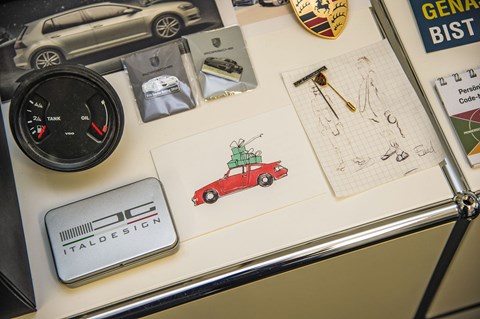
We come to the first 911 (1963), which nowadays looks almost impossibly small and dainty. ‘A step forward on the 356 and you can see the connection: the side window shape, upright screen, simple and taut surface treatment, high front fenders… a very modern car but with a clear connection to the 356 and this is how they started to build the brand identity. That was very far-sighted, especially for a young company. They could have tried to do something all-new with the 911 but they didn’t make that mistake. They only got it wrong once – the 928 [1978].’
Ah, the 928! One of the all-time great luxury GTs, the only sports car to win European Car of the Year, LJK Setright’s favourite Porsche (in fact, the only Porsche he ever liked) and Porsche’s first all-new sports car (even the 356 had Beetle genes). And a big marketing mistake. ‘The 928 was supposed to replace the 911 [whose sales dipped in the mid-’70s]. Then some clever person realised that was not the right strategy.’
But what a car! ‘Yes, incredibly brave. Integrated bumpers, that soft nose, adjustable steering wheel and instruments, pop-up headlamps. Who else was doing a car like that? Nobody. That car was maybe too modern, maybe the most modern Porsche ever. Porsche thought that was the way to go, not the 911. I think we can be very happy that didn’t happen.’
Then, the 917 (1969), a twice Le Mans winner and the car that elevated Porsche into the top-tier supercar league. Mauer says he’d love to drive one. I tell him I have. He cites the aerodynamic functionality, which made the car look the way it does, and its ‘industrial’ design. ‘You can see the structure, the way it’s made. Nowadays we cover everything. That’s such a shame.’
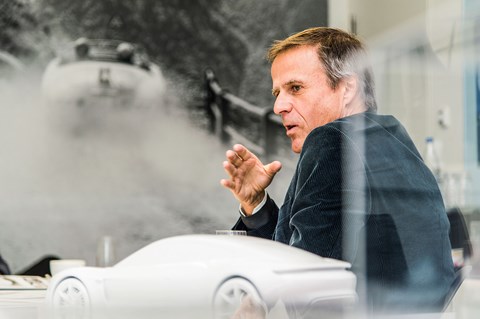
He says these old Porsches taught him a lot. ‘You need to push forward the design language but without losing contact with your history. Whenever we design a new 911, I say first of all, everyone has to recognise that it is a 911 and, second, we need to create a design that lets people know it is a new one. It’s hard. How far do you go? Do you go too far? It’s our most cautious car. It’s our most difficult car to design and, at the same time, the most exciting for a designer. This is our core product. It also defines our corporate design language.’
His single favourite Porsche? ‘The 964 [third-generation 911, of 1988]. I guess it’s inevitable when you work for Porsche that your favourite Porsche is a 911.’ He says most people say the 993 [1993] is the best 911 but he thinks the front conflicts with the centre section, like two cars in one. ‘The 964 has so much of the original 911 and the bumpers are more integrated. It’s the perfect connection to history but shows real modernity.’ He owns three 964s: a coupe, a targa and a cabriolet.
We finish our tour with the Le Mans-winning [2014-2017] 919 sports racer, an ugly bug after the graceful birds we see earlier. ‘To design this type of car is not fun. It’s all to do with aerodynamics and regulations. The only thing we could influence was the graphic on the side. Even the strong four-dots headlight of the first-generation 919 – a Porsche feature – was replaced after the first season. The racers said they needed better lights so we got the same lights as Audi. It is so much driven by functionality. The old cars were less driven by regulations and science.’
The new electric Taycan was conceived using Porsche’s time-honoured philosophy: modern but acknowledging the rich past. ‘From a design view, I’m very happy Porsche went into the BEV [battery-electric vehicle] market. It opened a window. It’s much more than an evolution. We had to visualise a new decade and be more progressive.’
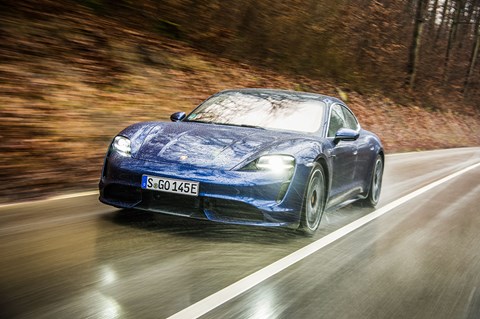
We drive a Taycan Turbo the 30 minutes or so north-west from the historic factory and museum in Zuffenhausen, in northern Stuttgart, to the engineering and design headquarters in Weissach, just outside the city. Mauer says the greatest design achievement of the Taycan is its height-to-width proportion, especially its lowness.
‘It’s the first electric vehicle with these dramatic proportions [the Taycan is 1387mm tall, versus 1445mm for Tesla’s Model S]. The problem with having batteries in the floor [as nearly all electric cars do, to keep the centre of gravity low] is that it makes for a high car, and that’s not very sporty. The engineers came up with the idea of cut-outs in the floor, where you don’t put batteries, so people can sit lower. Plus, the batteries are very well packaged. This helps the handling and driving because the batteries are as low as possible, and it helped the design.
‘SUVs can accommodate batteries more easily, because they’re high. The safe bet for Porsche’s first BEV would have been an SUV, because the cake is bigger. But we had to prove that electric cars can be true sports cars.’
As electric cars progress, so Mauer believes he’ll enjoy more design freedom. ‘As components and batteries get smaller, that will open packaging and design opportunities. It’s a bit like mobile phones. In the beginning they were like boxes. Now everything is smaller and the technology does not define the size.
‘We are in a transition phase for electric cars. We’ll miniaturise parts and this will create more design freedom. But the brand is still so important. On Porsches, we have high centre consoles and high beltlines, to give a feeling of sitting in the car, not on the car. Now you come to the point where maybe you don’t need the high centre console. But you do it for the brand identity. Tesla can have clean, open interiors. But we have to be conscious that people are driving a Porsche.’
He tells me he finds Tesla interior design much more interesting than its exterior design. ‘But let’s face it, without Tesla, the traditional automotive industry would not have made such electric-car progress.’
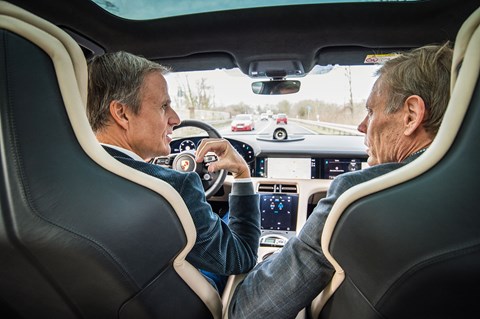
The greater uniformity of electric cars, and the move towards autonomous driving, present challenges. ‘A great brand such as Porsche needs three qualities. Can you see the difference? Can you feel the difference? Can you tell a story around it? The latter is why people in America, China and Switzerland, who never drive fast, want a car with 600 horsepower. There’s a story behind it. Moving forward, the function and feel become more challenging, design becomes more important and, if you can no longer drive fast, then the story around the brand becomes more important, too.’
Mauer is 57 and was brought up in the Black Forest, not far from Porsche’s Stuttgart home. He spends as much time as possible outdoors and looks tanned and fit, no surprise when he tells you he spends most weekends during the winter skiing, often at his own place in Switzerland. This is why he doesn’t drive a Taycan as his everyday car. ‘The problem is the range. It’s too far when I go skiing and charging there can be difficult. Plus, I often go last minute, so being limited by the car’s state of charge would be a nightmare.’
Rather, his day-to-day transport is a Panamera. ‘I used to have 911s. But skiing and mountain biking are my passions, so I need space for my sports gear. I could have had a Cayenne or a Macan but the Panamera is more sporty. I’m not an SUV man. I like a car that’s low and wide. The Panamera is a sports car with space.’
We arrive in Weissach and go to Mauer’s office. Model cars line one of his walls, many miniatures of cars he has designed. ‘Weissach is really in the middle of nowhere and I live about 40 minutes’ drive from here, in the countryside. I get my inspiration not from city museums or art galleries but from being in the country, on my own, spending a couple of hours on the mountain or in the forest.’

Mauer has worked for three car makers, Mercedes-Benz (including Smart), Saab (briefly, as design chief, under General Motors) and now Porsche. ‘After school I didn’t know what to do, although I had dreams of becoming a ski instructor. My dad, who was a doctor, had a friend at Mercedes-Benz and asked him whether there was a profession that combined art, at which I was good, and a love of cars. He said, yes, a car designer. I got an internship at Mercedes in 1986.’
The great Bruno Sacco, design boss of Mercedes from 1975 to 1999, was his mentor. Sacco’s style prioritised surfacing, proportions and stance. It made Merc design timeless (not true today, and not true of many other car makers, either). ‘He taught me the importance of building a brand by consistent design, and of “reductivism” – no decorations, clean surfacing.’
Sacco also believed in design continuity, from model to model, and from generation to generation. This has underpinned Porsche design from the very beginning. It’s clearly a Mauer long-time signature, too.
‘Each model must be recognisable as a Porsche but each new model must have its own new elements and its own identity.’ Little wonder that Porsche’s design boss – a local Swabian boy, after all – feels so comfortable in calling the Stuttgart sports car maker home. ‘Leaving Saab and coming back to Germany, loving sports cars and working for such an iconic brand… well, it was an easy move. Mind you, I soon learnt that designing a new 911 is not business as usual.’
Read our Porsche reviews
By Gavin Green
Contributor-in-chief, former editor, anti-weight campaigner, voice of experience

Discoverymuseum
Blog about America's amusement parks museums

Discover the Enigmatic World of Porsche: Inside the Museum

For car lovers, few destinations ignite the imagination quite like the Porsche Museum. Nestled in the heart of Stuttgart, Germany, this architectural marvel is a shrine to the legendary Porsche marque, chronicling its rich history and unwavering commitment to automotive excellence. Step inside and prepare to embark on a thrilling journey, where iconic vehicles and innovative engineering come together to tell a captivating story.
Subject and History: Discover the Fascinating World of Porsche at the Porsche Museum
Nestled in the heart of Stuttgart-Zuffenhausen, Germany, the Porsche Museum is an emblem of the rich heritage and pioneering spirit of Porsche, a name synonymous with automotive excellence. Since opening its doors in 1976, the museum has offered a fascinating chronicle of Porsche’s journey from its foundation in 1931, through the development of its iconic vehicles, to the present day. This museum is more than just a collection of cars; it’s an immersive experience into the legacy of a brand that has consistently pushed the boundaries of engineering and design.
Exploring the Porsche Museum: A Deep Dive into Automotive History
- Exhibition of Innovation: Visitors are treated to an extensive array of exhibits that trace the technological evolution and design prowess of Porsche. From the earliest models to the latest high-performance sports cars, the museum displays an impressive lineup that captures the innovation and craftsmanship of the brand;
- Architectural Marvel: The building itself is a testament to modern design, with its contemporary architecture providing the perfect backdrop for the array of historic and cutting-edge vehicles on display. The structure is designed to reflect the dynamic nature of the brand, making it a visual treat in its own right;
- Interactive and Educational Displays: The museum offers a range of interactive exhibits, including multimedia presentations and hands-on displays that delve into the engineering feats, design philosophy, and historical milestones of Porsche. These engaging elements make the museum visit educational and entertaining for all ages;
- Special Exhibitions and Events: Throughout the year, the museum hosts special exhibitions and events that spotlight particular aspects of Porsche’s history and its contributions to automotive culture. These limited-time events provide a deeper understanding and fresh perspectives on the brand’s legacy.
Visitor Experience Enhancements
- Guided Tours: Opt for a guided tour to gain expert insights into the stories behind the cars and the company’s history. These tours can enhance the visitor experience with anecdotes and facts not readily available to the general public;
- Gift Shop and Café: The museum features a gift shop with exclusive Porsche merchandise and a café where visitors can relax and reflect on their experience while enjoying culinary treats.
Practical Information:
- Accessibility: The museum is designed to be accessible to everyone, with facilities to accommodate guests with disabilities;
- Getting There: Conveniently located in Stuttgart-Zuffenhausen, the museum is easily reachable by public transportation or car, with ample parking available for visitors.
Exhibits and Displays:
- Classic Cars: Step into a world of timeless elegance with a collection of classic Porsche cars, each telling a unique story of design and craftsmanship;
- Racing Vehicles: Explore the adrenaline-fueled history of Porsche’s racing heritage, from iconic Le Mans winners to championship-winning Formula 1 cars;
- Prototypes: Get a glimpse into the future of automotive design with prototypes that push the boundaries of innovation and technology;
- Interactive Displays: Engage with interactive exhibits that offer insights into Porsche’s engineering prowess, allowing visitors to understand the intricate details behind each vehicle.
History and Heritage:
- Founded by Ferdinand Porsche in 1931, the museum pays homage to the visionary spirit that continues to drive Porsche forward;
- Learn about key milestones in Porsche’s history, from groundbreaking innovations to iconic models that have left an indelible mark on the automotive industry;
- Discover the stories behind legendary Porsche cars, such as the 911, Cayenne, and Panamera, and their impact on automotive design and performance.
Opening Hours and Contact Information:
- Plan your visit with ease, as the museum is open from Tuesday to Sunday, offering ample time to explore its extensive collection;
- For inquiries or ticket reservations, contact the museum via email at [email protected] or by phone at +49 (0) 711 911-20911;
- Note the ticket desks close at 5.30 p.m., so be sure to arrive in time to fully enjoy your experience.
Ticket Pricing and Special Offers:
- Tickets can be purchased on-site at the ticket counters, with various pricing options available for different visitor categories;
- Take advantage of reduced prices for students, pensioners, people with disabilities, and Porsche Club members, among others;
- Families and groups can opt for group tickets or family packages, making it an ideal outing for all ages.
Multimedia Guide and Languages:
- Enhance your museum experience with a free multimedia guide available in multiple languages, including German, English, French, Spanish, Russian, Chinese, Japanese, and Italian;
- Children can enjoy a specially curated version of the multimedia guide, ensuring a fun and educational visit for the whole family.
Location and Contact Details:
Porsche Museum
Porscheplatz 1
70435 Stuttgart-Zuffenhausen
General Enquiries: +49 711 911-20911
Ticket Enquiries: +49 711 911-25678
Website: https://www.porsche.com/international/aboutporsche/porschemuseum/
Note: Prices and information provided are subject to change, so it’s recommended to check the official Porsche Museum website or contact them directly for the latest updates and offerings.
The Porsche Museum isn’t just a collection of cars; it’s a journey through automotive history and a testament to Porsche’s relentless pursuit of excellence. From the early ingenuity of Ferdinand Porsche to the cutting-edge technology of today’s models, the museum offers a glimpse into the brand’s DNA. Whether you’re a car enthusiast or simply appreciate innovation and design, the Porsche Museum is a must-visit destination. It leaves you with a lasting impression of the brand’s rich heritage and its exciting future on the road ahead.

- Norsk Bokmål
Select currency
- Czestochowa
Stuttgart: Private Porsche Museum Tour with Guide
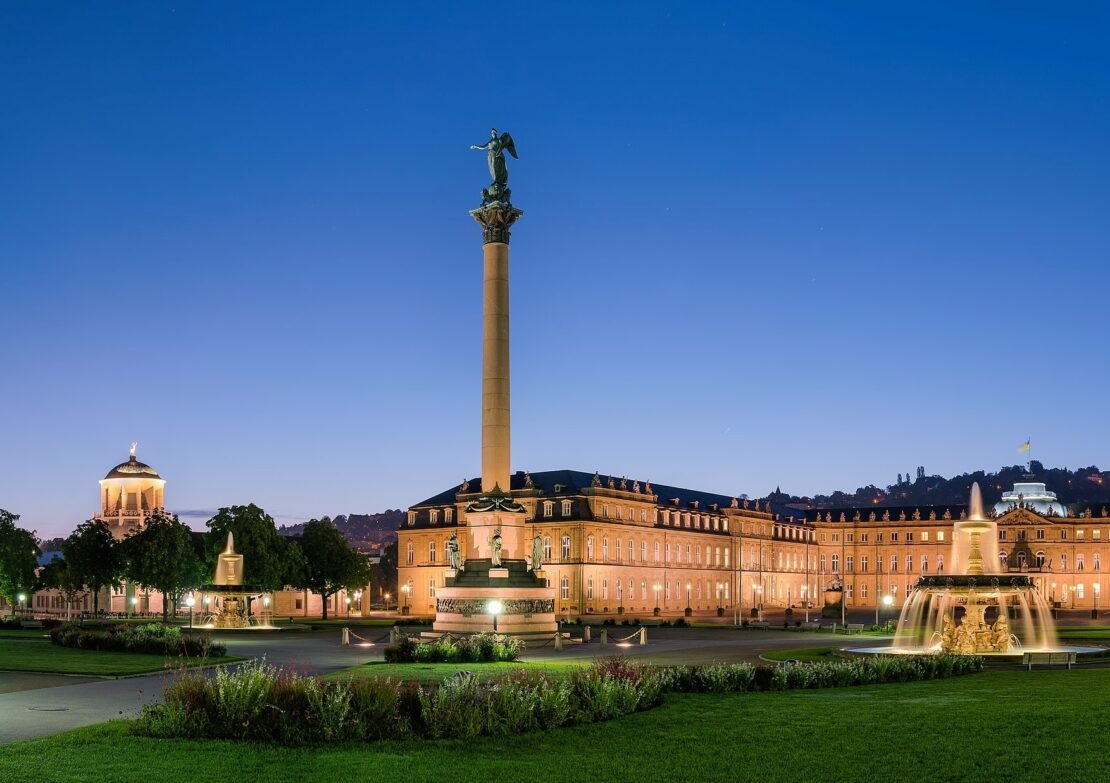
Enjoy the journey through the time and explore the variety of car models through the years at the Porsche Museum. Private Guide will take you around the amazing world of luxury cars and the Porsche brand. Get ready for an amazing experience and see for yourself how the sports car industry has grown over the years!
- Discover the world of the most popular brand of sports cars at the Porsche Museum
- Expand your journey in the automotive world with a visit to the Mercedes-Benz Museum
- Do not worry about transport and enjoy the comfortable car transferHave an amazing time on exclusive tour with Professional Guide who will adjust tempo and information according to your wish
- Explore the museum’s attractions in an intimate group of your friends or family
Check Price
Data * (optional)
Godzina (optional)
Available trips:
Activity details.
- 3 - 5 hours
- Private Tour Exclusive only for you
- Just buy and we instantly organize Your booking ensure the tour is already fully organized, just come and enjoy!
- Live Guide English, German, French, Italian, Russian, Spanish
- Car Transport
- Skip The Line Tickets for Priority Access
Experience an amazing adventure at the Porsche Museum and let yourself get carried away by the great history behind this famous car brand. Choose our private tour with a 5-Stars Guide who cares about your informative trip and enriches your museum adventure.
The Porsche Museum attracts many tourists, not only car enthusiasts. Your tour starts at an easy-find meeting point in front of the Porsche Museum or you do not worry about getting to the museum and use the car transfer to pick you up and drop you off.
During 2 hours you will meet your guide in front of the museum and experience a 2-hour journey through amazing exhibitions and attractions. See 95 cars at the exhibitions and listen to the story of the sports car manufacturer. Experience the magic of the automotive world and admire amazing inventions. Not only will you learn interesting facts about Porsche’s history and brand, but you will also be interactively engaged at some points of the exhibition.
Choose the 3-hours option and enjoy the incredible comfort of travelling by a car that will pick you up and drop you off at your accommodation. Do not worry about having to arrive on time, just wait for your car transfer and then experience an amazing visit at the Porsche museum with an Expert Guide.
The 5-hours option will allow you to experience the automotive world even deeper.
Enjoy the car transfer that will take you to the Porsche Museum. After this amazing tour, you’ll be driven straight to the unique Mercedes-Benz Museum. This place offers another unforgettable journey back in time to learn about automotive history. Explore more than 1,500 exhibits and variety of the brand, as well as daily work of Mercedes-Benz workers.
- Private Tour at the interesting Porsche Museum
- 5-Stars Guide with Official German License speaking fluently in chosen language
- Regular ticket to the Porsche Museum
- Skip the line ticket to the Mercedes-Benz Museum (in 5-hours option)
- Pick up and drop off service (in 3 and 5-hours option)
- Customized tempo and interest as it is the Private Tour
Important information
What you should know.
- On Monday the Porsche Museum and the Mercedes-Benz Museum are closed.
- Please check your email the day before the tour in order to receive important information.
- If you have chosen the 5-hours option please be aware that skip the line tickets are provided to Mercedes-Benz Museum and regular tickets to the Porsche Museum.
Why choose Rosotravel.com
Customer reviews
- Customer Service: 0 0 / 5
- Organization: 0 0 / 5
- Value for money: 0 0 / 5
- Guide: 0 0 / 5
Only customers who have purchased this product may leave a review.
You might also like

Berlin Jewish Quarter and Holocaust Private Walking Tour
Berlin: Skip The Line DDR Museum with Old Town Sightseeing

Berlin: Old Town Highlights Private Walking Tour

PORSCHE Factory Guided Tour
by mraccine | Sep 22, 2023 | Trips
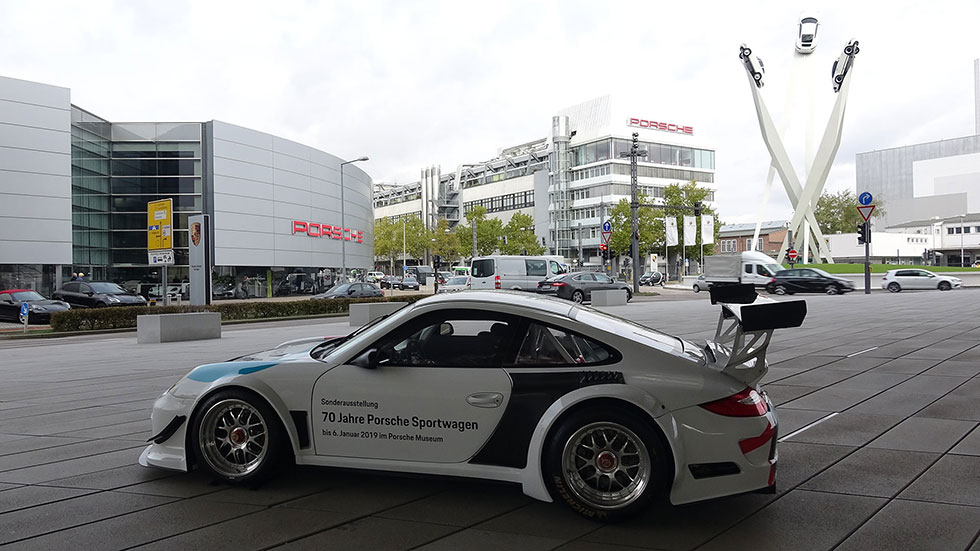
We had a delicious lunch at the Boxenstop Restaurant at the Museum – Thank you PORSCHE Compamy very much. In the afternoon we were able to visit the Taycan Production Line. It’s the same work schedule; however, there are only two shifts. There are not as many work stations like for the 911, but instead there are 7 areas, i.e., work pods. For each area a crew has 10-12 minutes to do their assembly work. It is also much more automated robot QR code based. The 911 Production is still barcode based. The Taycan Factory is 25 meters high (about 80 ft.), because more is not allowed due to zoning restrictions in Zuffenhasuen; therefore, an additional 25 meters of the Taycan Factory is underground.
Recent Posts
- Tuscany Here We Come!
- Stuttgart Via the Black Forest
- Dining is Different in Europe
- Canapes and Cocktails
- A Drive To Where It All Started
- Tour Account ›
- Travel Forum ›
- Travel Forum
- Porsche Factory T...
Porsche Factory Tour and Museum
We are planning to visit Stuttgart and the Porsche Factory tour and museum. Was curious if anyone had done that?
I didn't do the factory tour, but didn't find the museum very interesting unless you are a hardcore Porsche enthusiast - lots of different variants of the 356 and 911 families. The Mercedes museum is more generally interesting.
We are visiting the Porsche museum in early May during a stopover in Sttutgart on our drive from Bavaria to Cochem on the Moselle river. It's a must see if you're a Porsche owner, which I've been off and on since 1973.
My partner owns 2 older Porsches do we are actually building our trip in Germany around that!
He’s owned Porsches forever!
I agree with Philip in that I also found the Porsche museum less interesting than the Mercedes museum or BMW museum. That said, as a car enthusiast I still found it interesting enough to recommend but I’d also recommend visiting the other two if you can.
Do you have your factory tour booked? This must be done ahead of time. I've not done the factory tour at Porsche, so I can't comment. I have been on the BMW factory tour in Munich and it was fantastic! I would imagine Porsche to be similar, but it is a bit difficult to schedule.
The Porsche museum is more like a cathedral to Porsche. The better museum is Mercedes. It is one of the best museums we've ever visited. But let's face it, no one goes to Porsche for the museum experience. They go for Porsche! You'll see a lot of cars and you'll love it.
But, instead of the museum or factory, I recommend that you RENT a Porsche and drive it ! There are several options - half day, full day, etc. Different models to chose from (we drove a 911 4S) and they even provide some great driving routes. We didn't use the driving routes, but they are well done and if you're not familiar with the area, I would recommend that. You collect your vehicle at the museum through Porsche Drive. They will give you a brief tutorial and then you'll be on your way. There is a petrol station a few blocks from the museum where you refuel the car.
As wonderful as it was to see the different models in the museum, the big thrill was the drive!
Thanks for your post, but in fact, we own two Porsches - which is why we want to go to the factory! And yes, even though we are Porsche people, we do plan to go to the Mercedes museum too! And BMW World in Munich!
Great!! Yes, then you will LOVE the Porsche museum and you absolutely must book the tour, but contact them now. There were no tours available when we were there, and we reached out fairly early. Even if you've owned a Porsche or two or more, it would be worth your time to rent one, especially with the autobahn right there. Once you're in the open speed zone area....wow!
BMW is a fairly easy tour to schedule - just email them your dates. It can fill up quickly, so if you know your dates, do that soon. The tour is excellent. The museum is very nice, it's all things BMW. There is a great M-Power exhibit. BMW World is a lot of fun if you want to see the cars and pick up some BMW merchandise.
Mercedes is still my favorite museum (but I drive a BMW). It is world history as influenced by the automobile. I've been several times, just because I love it.
Porsche and Mercedes have teemed up to share ticket pricing, so be sure to check that out.
If you have time in Stuttgart, go to the Sky Beach bar. It's a lot of fun!
Thanks for the recommendations! In fact, we have already been in touch with the Porsche folks and are working on a date. Hopefully it will pan out. My daughter and son-in-law loved BMW world too. And yes, we'll go to the Mercedes Museum!
We're driving from Stuttgart to Fussen, Munich, Rothenburg, Nuremburg and then flying home from Frankfurt. Any and all recommendations are welcome!
If you are going to have a car, about a half hour southwest of Stuttgart is Böblingen, which has Motorworld. My hubby and my dad totally geeked out here and were like little kids in a candy shop with all the cool cars that are stored here. Private individuals can store their cars here and they are displayed like a museum. It is free. You can also get a hotel room, but I heard it was a bit noisy. It is located on an old airplane landing strip, and I saw some cars you can rent to drive on it. http://www.motorworld.de/en/
We typically stay in Böblingen as it is a lot less expensive than staying in Stuttgart. One of our favorite breweries is also in Böblingen. http://www.brauhaus-schoenbuch.de/
Enjoy your time!!
In the Porsche Museum a guided tour can make the visit more interesting.
Depending on how tight your schedule is, you might want to visit either of the two large car museums, run by the same enthusiast group, in Speyer or Sinsheim (sorry, would link, but there seems to be a problem with their website at the moment). Both of them wouldn't be far off your route from Stuttgart to the Mosel area.
This topic has been automatically closed due to a period of inactivity.
- Click to view our Accessibility Statement or contact us with accessibility related questions
- Porscheusa.com
- Login / Register
- 01 How many and when
- 02 Choose your tour
- 03 Who will be attending
How many participants and when would you like to visit?
If you have a special request for your tour, please contact us to make arrangements. To book a different experience for a participant, please register separately.
{{print_full_date()}}
- = numParticipants"> {{formatTime12hr(timeslot.start_time)}} - {{formatTime12hr(timeslot.end_time)}}
Choose your tour experience
{{item.sc.name}}.
{{getAvailability(item)}} available
Please tell us more about who will be participating.
Participant {{index + 1}}, are you sure you would like to change venues.
Your cart contains experiences from a different venue. To proceed with adding experiences for this venue your cart will be cleared.
Special activities for children
Porsche 4Kids
- Exhibition Concept
- Interactivity
- The Prologue
- 75 Years Porsche sports cars
- Event rooms in the Museum
- Current events
The Porsche Museum is a lively place where past, present and future converge. The Museum therefore offers special activities for children such as children’s tours, a museum rally and a child-friendly multimedia guide. It is even possible to hold children’s birthday parties against a backdrop of more than 30,000 PS of automotive history.
Porsche 4Kids Junior Museum Tour
During a personal guided tour of the Museum, the history of the Porsche company and family as well as basic information about cars are explained interactively in an age-appropriate way to children aged between 4 and 7 years. After a tour of the exhibition, which lasts around 45 minutes, the children can give free rein to their creativity and use crayons to draw their own vehicle designs. This offer is especially suitable for kindergarten groups, but also to celebrate the birthdays of future Porsche drivers. The guided tour can be booked for groups of up to 10 children plus two accompanying adults. The charge for the around 60-minute programme is 75 euros plus the admission fee. Children up to the age of 14 have free admission.

Porsche 4Kids Museum Tour
The history of Porsche and the exhibits in the Porsche Museum are explained in very easy terms to children aged between 8 and 13 years. They can discover the fascination of Porsche in a playful way. This guided tour can be booked for groups of up to 10 children plus two accompanying adults. The charge for the around 60-minute personal guided tour is 75 euros plus the admission fee. Children up to the age of 14 have free admission.
Porsche 4Kids birthday
A children’s birthday against the backdrop of more than 30,000 PS is a great way to introduce the history of Porsche to young museum visitors. The birthday child and parents can choose the party theme: “Design”, “Aerodynamics”, “Motorsport” and “Engines”. While the themes “Design”, “Aerodynamics” and “Motorsport” are designed for 8- to 13-year-olds, the theme “Engines” is especially suitable for 12- and 13-year-olds. A birthday cake, sweet or savoury pastries and drinks can be added to the booking as an optional extra.
The children are first invited to take part in a guided tour through the exhibition. The focus of this tour is design, and answers are given to questions such as “What are the design features of a Porsche?” or “How do designers work?”. Thanks to the interactive nature of the tour, children can not only see and listen to the exhibits, their sense of smell and taste is also stimulated. After experiencing what it is like to sit in a Porsche, the children themselves can become creative and paint a wooden Porsche according to their own ideas.
Aerodynamics
Questions such as why cars cannot fly like an aircraft are examined during a children’s birthday with the theme “Aerodynamics”. The children are invited at the start to discover the exhibition by means of a Museum rally. In a playful way, the children become familiar with different materials and learn what technical aids can improve the aerodynamics of a vehicle. Afterwards, the children can test everything they have learned in a model wind tunnel and then create their own aerodynamic vehicle.
Porsche has embodied the fascinating world of motorsport for decades, and young museum visitors can experience this fascination in a playful way. With special attention to motorsport history, the race cars and also the motorsport environment, children can explore the exhibition by means of a museum rally. The rally naturally also covers the spectators and sponsors. Speed and skill are required afterwards: during a pit stop, the car drivers of the future can show how quickly they can dress in full racing gear and then climb into a race car. The excitement continues when it comes to seeing who crosses the finishing line first during the subsequent Carrera slot car race.
During this interactive guided tour of the exhibition, everything revolves around the fascinating topic of engines. The children learn why engines are needed, how they work and what characterises a typical Porsche engine. After the tour, it goes without saying that the children are allowed to experience what it is like to sit in a Porsche. All the young visitors then have the opportunity to build a miniature wheel-hub motor themselves which they can take home as a souvenir.
Porsche 4Kids Guide
Modern channels are used in the museum to convey information about Porsche’s origins and its experience in vehicle construction. The Porsche Museum now has a new multimedia guide in which the previous audio clips have been expanded to include 5,000 pictures and 700 films of all exhibits. These can be accessed via a high-resolution touch display. As a result, Museum visitors can immerse themselves even more deeply in the history of Porsche.
The guide is available in several languages in adult and child versions.

- Souvenirs for fans of the brand
Your cookie settings
Please select your cookie preferences below.
These cookies are necessary in order to ensure the unrestricted functionality of this website and cannot be deactivated.
These cookies are used to see how you interact with our website, which helps us improve performance and adapt the content to your interests. To do this, we use the services of third-party providers that receive information about your use of our website and may, for their own purposes, also combine this with other data that they have received from you and possibly from elsewhere.
- Preplanned tours
- Daytrips out of Moscow
- Themed tours
- Customized tours
- St. Petersburg
Moscow Metro
The Moscow Metro Tour is included in most guided tours’ itineraries. Opened in 1935, under Stalin’s regime, the metro was not only meant to solve transport problems, but also was hailed as “a people’s palace”. Every station you will see during your Moscow metro tour looks like a palace room. There are bright paintings, mosaics, stained glass, bronze statues… Our Moscow metro tour includes the most impressive stations best architects and designers worked at - Ploshchad Revolutsii, Mayakovskaya, Komsomolskaya, Kievskaya, Novoslobodskaya and some others.
What is the kremlin in russia?
The guide will not only help you navigate the metro, but will also provide you with fascinating background tales for the images you see and a history of each station.
And there some stories to be told during the Moscow metro tour! The deepest station - Park Pobedy - is 84 metres under the ground with the world longest escalator of 140 meters. Parts of the so-called Metro-2, a secret strategic system of underground tunnels, was used for its construction.
During the Second World War the metro itself became a strategic asset: it was turned into the city's biggest bomb-shelter and one of the stations even became a library. 217 children were born here in 1941-1942! The metro is the most effective means of transport in the capital.
There are almost 200 stations 196 at the moment and trains run every 90 seconds! The guide of your Moscow metro tour can explain to you how to buy tickets and find your way if you plan to get around by yourself.
Moscow Metro Tour
- Page active

Description
Moscow metro private tours.
- 2-hour tour $87: 10 Must-See Moscow Metro stations with hotel pick-up and drop-off
- 3-hour tour $137: 20 Must-See Moscow Metro stations with Russian lunch in beautifully-decorated Metro Diner + hotel pick-up and drop off.
- Metro pass is included in the price of both tours.
Highlight of Metro Tour
- Visit 10 must-see stations of Moscow metro on 2-hr tour and 20 Metro stations on 3-hr tour, including grand Komsomolskaya station with its distinctive Baroque décor, aristocratic Mayakovskaya station with Soviet mosaics, legendary Revolution Square station with 72 bronze sculptures and more!
- Explore Museum of Moscow Metro and learn a ton of technical and historical facts;
- Listen to the secrets about the Metro-2, a secret line supposedly used by the government and KGB;
- Experience a selection of most striking features of Moscow Metro hidden from most tourists and even locals;
- Discover the underground treasure of Russian Soviet past – from mosaics to bronzes, paintings, marble arches, stained glass and even paleontological elements;
- Learn fun stories and myths about Coffee Ring, Zodiac signs of Moscow Metro and more;
- Admire Soviet-era architecture of pre- and post- World War II perious;
- Enjoy panoramic views of Sparrow Hills from Luzhniki Metro Bridge – MetroMost, the only station of Moscow Metro located over water and the highest station above ground level;
- If lucky, catch a unique «Aquarelle Train» – a wheeled picture gallery, brightly painted with images of peony, chrysanthemums, daisies, sunflowers and each car unit is unique;
- Become an expert at navigating the legendary Moscow Metro system;
- Have fun time with a very friendly local;
- + Atmospheric Metro lunch in Moscow’s the only Metro Diner (included in a 3-hr tour)
Hotel Pick-up
Metro stations:.
Komsomolskaya
Novoslobodskaya
Prospekt Mira
Belorusskaya
Mayakovskaya
Novokuznetskaya
Revolution Square
Sparrow Hills
+ for 3-hour tour
Victory Park
Slavic Boulevard
Vystavochnaya
Dostoevskaya
Elektrozavodskaya
Partizanskaya
Museum of Moscow Metro
- Drop-off at your hotel, Novodevichy Convent, Sparrow Hills or any place you wish
- + Russian lunch in Metro Diner with artistic metro-style interior for 3-hour tour
Fun facts from our Moscow Metro Tours:
From the very first days of its existence, the Moscow Metro was the object of civil defense, used as a bomb shelter, and designed as a defense for a possible attack on the Soviet Union.
At a depth of 50 to 120 meters lies the second, the coded system of Metro-2 of Moscow subway, which is equipped with everything you need, from food storage to the nuclear button.
According to some sources, the total length of Metro-2 reaches over 150 kilometers.
The Museum was opened on Sportivnaya metro station on November 6, 1967. It features the most interesting models of trains and stations.
Coffee Ring
The first scheme of Moscow Metro looked like a bunch of separate lines. Listen to a myth about Joseph Stalin and the main brown line of Moscow Metro.
Zodiac Metro
According to some astrologers, each of the 12 stops of the Moscow Ring Line corresponds to a particular sign of the zodiac and divides the city into astrological sector.
Astrologers believe that being in a particular zadiac sector of Moscow for a long time, you attract certain energy and events into your life.
Paleontological finds
Red marble walls of some of the Metro stations hide in themselves petrified inhabitants of ancient seas. Try and find some!
- Every day each car in Moscow metro passes more than 600 km, which is the distance from Moscow to St. Petersburg.
- Moscow subway system is the 5th in the intensity of use (after the subways of Beijing, Tokyo, Seoul and Shanghai).
- The interval in the movement of trains in rush hour is 90 seconds .
What you get:
- + A friend in Moscow.
- + Private & customized Moscow tour.
- + An exciting pastime, not just boring history lessons.
- + An authentic experience of local life.
- + Flexibility during the walking tour: changes can be made at any time to suit individual preferences.
- + Amazing deals for breakfast, lunch, and dinner in the very best cafes & restaurants. Discounts on weekdays (Mon-Fri).
- + A photo session amongst spectacular Moscow scenery that can be treasured for a lifetime.
- + Good value for souvenirs, taxis, and hotels.
- + Expert advice on what to do, where to go, and how to make the most of your time in Moscow.
Write your review
- Articles >
The Moscow Metro Museum of Art: 10 Must-See Stations
There are few times one can claim having been on the subway all afternoon and loving it, but the Moscow Metro provides just that opportunity. While many cities boast famous public transport systems—New York’s subway, London’s underground, San Salvador’s chicken buses—few warrant hours of exploration. Moscow is different: Take one ride on the Metro, and you’ll find out that this network of railways can be so much more than point A to B drudgery.
The Metro began operating in 1935 with just thirteen stations, covering less than seven miles, but it has since grown into the world’s third busiest transit system ( Tokyo is first ), spanning about 200 miles and offering over 180 stops along the way. The construction of the Metro began under Joseph Stalin’s command, and being one of the USSR’s most ambitious building projects, the iron-fisted leader instructed designers to create a place full of svet (radiance) and svetloe budushchee (a radiant future), a palace for the people and a tribute to the Mother nation.
Consequently, the Metro is among the most memorable attractions in Moscow. The stations provide a unique collection of public art, comparable to anything the city’s galleries have to offer and providing a sense of the Soviet era, which is absent from the State National History Museum. Even better, touring the Metro delivers palpable, experiential moments, which many of us don’t get standing in front of painting or a case of coins.
Though tours are available , discovering the Moscow Metro on your own provides a much more comprehensive, truer experience, something much less sterile than following a guide. What better place is there to see the “real” Moscow than on mass transit: A few hours will expose you to characters and caricatures you’ll be hard-pressed to find dining near the Bolshoi Theater. You become part of the attraction, hear it in the screech of the train, feel it as hurried commuters brush by: The Metro sucks you beneath the city and churns you into the mix.
With the recommendations of our born-and-bred Muscovite students, my wife Emma and I have just taken a self-guided tour of what some locals consider the top ten stations of the Moscow Metro. What most satisfied me about our Metro tour was the sense of adventure . I loved following our route on the maps of the wagon walls as we circled the city, plotting out the course to the subsequent stops; having the weird sensation of being underground for nearly four hours; and discovering the next cavern of treasures, playing Indiana Jones for the afternoon, piecing together fragments of Russia’s mysterious history. It’s the ultimate interactive museum.
Top Ten Stations (In order of appearance)
Kievskaya station.

Kievskaya Station went public in March of 1937, the rails between it and Park Kultury Station being the first to cross the Moscow River. Kievskaya is full of mosaics depicting aristocratic scenes of Russian life, with great cameo appearances by Lenin, Trotsky, and Stalin. Each work has a Cyrillic title/explanation etched in the marble beneath it; however, if your Russian is rusty, you can just appreciate seeing familiar revolutionary dates like 1905 ( the Russian Revolution ) and 1917 ( the October Revolution ).
Mayakovskaya Station
Mayakovskaya Station ranks in my top three most notable Metro stations. Mayakovskaya just feels right, done Art Deco but no sense of gaudiness or pretention. The arches are adorned with rounded chrome piping and create feeling of being in a jukebox, but the roof’s expansive mosaics of the sky are the real showstopper. Subjects cleverly range from looking up at a high jumper, workers atop a building, spires of Orthodox cathedrals, to nimble aircraft humming by, a fleet of prop planes spelling out CCCP in the bluest of skies.
Novoslobodskaya Station

Novoslobodskaya is the Metro’s unique stained glass station. Each column has its own distinctive panels of colorful glass, most of them with a floral theme, some of them capturing the odd sailor, musician, artist, gardener, or stenographer in action. The glass is framed in Art Deco metalwork, and there is the lovely aspect of discovering panels in the less frequented haunches of the hall (on the trackside, between the incoming staircases). Novosblod is, I’ve been told, the favorite amongst out-of-town visitors.
Komsomolskaya Station
Komsomolskaya Station is one of palatial grandeur. It seems both magnificent and obligatory, like the presidential palace of a colonial city. The yellow ceiling has leafy, white concrete garland and a series of golden military mosaics accenting the tile mosaics of glorified Russian life. Switching lines here, the hallway has an Alice-in-Wonderland feel, impossibly long with decorative tile walls, culminating in a very old station left in a remarkable state of disrepair, offering a really tangible glimpse behind the palace walls.
Dostoevskaya Station

Dostoevskaya is a tribute to the late, great hero of Russian literature . The station at first glance seems bare and unimpressive, a stark marble platform without a whiff of reassembled chips of tile. However, two columns have eerie stone inlay collages of scenes from Dostoevsky’s work, including The Idiot , The Brothers Karamazov , and Crime and Punishment. Then, standing at the center of the platform, the marble creates a kaleidoscope of reflections. At the entrance, there is a large, inlay portrait of the author.
Chkalovskaya Station
Chkalovskaya does space Art Deco style (yet again). Chrome borders all. Passageways with curvy overhangs create the illusion of walking through the belly of a chic, new-age spacecraft. There are two (kos)mosaics, one at each end, with planetary subjects. Transferring here brings you above ground, where some rather elaborate metalwork is on display. By name similarity only, I’d expected Komsolskaya Station to deliver some kosmonaut décor; instead, it was Chkalovskaya that took us up to the space station.
Elektrozavodskaya Station

Elektrozavodskaya is full of marble reliefs of workers, men and women, laboring through the different stages of industry. The superhuman figures are round with muscles, Hollywood fit, and seemingly undeterred by each Herculean task they respectively perform. The station is chocked with brass, from hammer and sickle light fixtures to beautiful, angular framework up the innards of the columns. The station’s art pieces are less clever or extravagant than others, but identifying the different stages of industry is entertaining.
Baumanskaya Statio
Baumanskaya Station is the only stop that wasn’t suggested by the students. Pulling in, the network of statues was just too enticing: Out of half-circle depressions in the platform’s columns, the USSR’s proud and powerful labor force again flaunts its success. Pilots, blacksmiths, politicians, and artists have all congregated, posing amongst more Art Deco framing. At the far end, a massive Soviet flag dons the face of Lenin and banners for ’05, ’17, and ‘45. Standing in front of the flag, you can play with the echoing roof.
Ploshchad Revolutsii Station

Novokuznetskaya Station
Novokuznetskaya Station finishes off this tour, more or less, where it started: beautiful mosaics. This station recalls the skyward-facing pieces from Mayakovskaya (Station #2), only with a little larger pictures in a more cramped, very trafficked area. Due to a line of street lamps in the center of the platform, it has the atmosphere of a bustling market. The more inventive sky scenes include a man on a ladder, women picking fruit, and a tank-dozer being craned in. The station’s also has a handsome black-and-white stone mural.
Here is a map and a brief description of our route:
Start at (1)Kievskaya on the “ring line” (look for the squares at the bottom of the platform signs to help you navigate—the ring line is #5, brown line) and go north to Belorusskaya, make a quick switch to the Dark Green/#2 line, and go south one stop to (2)Mayakovskaya. Backtrack to the ring line—Brown/#5—and continue north, getting off at (3)Novosblodskaya and (4)Komsolskaya. At Komsolskaya Station, transfer to the Red/#1 line, go south for two stops to Chistye Prudy, and get on the Light Green/#10 line going north. Take a look at (5)Dostoevskaya Station on the northern segment of Light Green/#10 line then change directions and head south to (6)Chkalovskaya, which offers a transfer to the Dark Blue/#3 line, going west, away from the city center. Have a look (7)Elektroskaya Station before backtracking into the center of Moscow, stopping off at (8)Baumskaya, getting off the Dark Blue/#3 line at (9)Ploschad Revolyutsii. Change to the Dark Green/#2 line and go south one stop to see (10)Novokuznetskaya Station.
Check out our new Moscow Indie Travel Guide , book a flight to Moscow and read 10 Bars with Views Worth Blowing the Budget For
Jonathon Engels, formerly a patron saint of misadventure, has been stumbling his way across cultural borders since 2005 and is currently volunteering in the mountains outside of Antigua, Guatemala. For more of his work, visit his website and blog .

Photo credits: SergeyRod , all others courtesy of the author and may not be used without permission
- What's My Car Worth?
- Buyer's Guide
Tour Sweden's World of Volvo before It Opens
The old Volvo museum closed its doors in December 2023, but the new World of Volvo location is a Swedish experience like never before.

- The World of Volvo is situated near Volvo Group headquarters and only 14 miles from the Gothenburg airport.
- We got a behind-the-scenes look ahead of its grand opening on April 14.
BMW Welt, a stone toss away from the company's HQ in Munich Germany, has Double Cones. The Porsche Museum in Zuffenhausen has a 911 kebab—or, as they call it, "Porscheplatz"—out front. And now, in the heart of downtown Gothenburg, Sweden, there are three giant tree trunks—the arms and legs of Volvo's new museum, exhibit, delivery program, meeting place, and eatery—World of Volvo.
Volvo invited us to explore the new facility ahead of its grand opening on April 14, which by no accident is the very day 97 years ago that the Swedish automaker's first vehicle, the four-door ÖV4, left its assembly line. The nearly 240,000-square-foot chunk of Gothenburg was designed by the Danish architecture group Henning Larson . It stands 14 miles from the Gothenburg-Landvetter airport and just 11 miles east of Torslanda, the home of Volvo Group headquarters and its oldest plant.
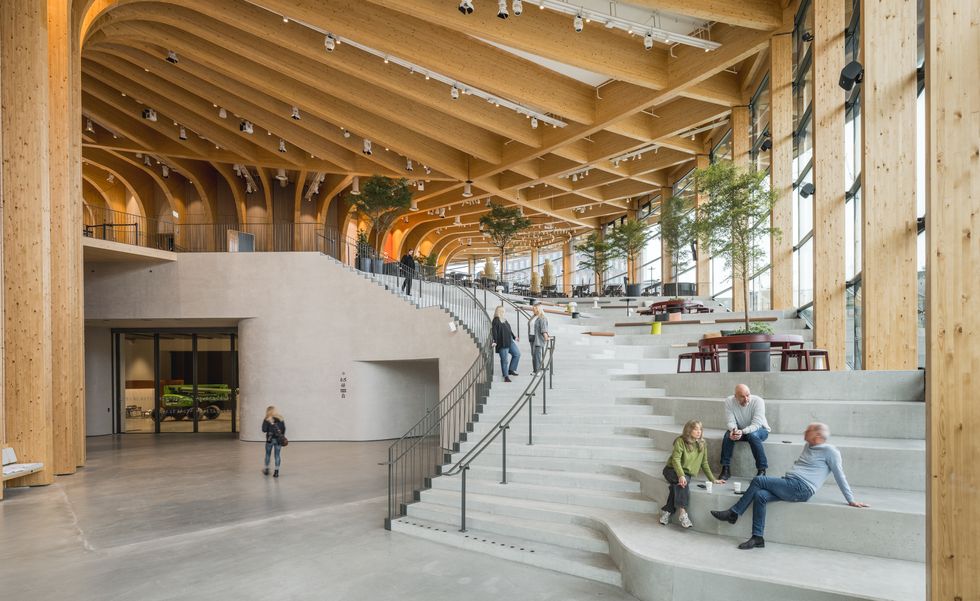
The space is Swedish beautiful. Its lack of extravagant shiny metals or spaceship style makes it feel real, welcoming, and warm. We overheard more than just a few fellow media guests compliment the spruce and pine fragrance that acts as a natural canopy over the structure's smooth concrete floors. The top floor, home to several rentable conference halls and classrooms, conceals the nearby highway thanks to the tilted roof below it. It took four years to design and construct, using some 2800 tons of lumber, and a few leftover lamp bulbs from the SAAB gearbox building that once occupied a portion of its space.
World of Volvo is five stories tall, and while its entrance honors Sweden's " Allemansrätten ," or "everyman's right to roam," with free admission, its grandiose event space, colorful and interactive exhibits, and restaurant run by Michelin-star chef Stefan Karlsson each require a handful of Swedish krona.

Its debut exhibit is a balance of Volvo's history, its pledge to safety, and future products. There are distracted-driving simulations, VR goggles, and an area that lets you scoop rubber balls out of a pit with a mini Volvo excavator. One clever installation shows the role speed plays in a car accident, using a stack of wooden chairs. It's an interesting way to see crashing without a seatbelt at 15 km/h (9 mph) versus crashing at 30 km/h (19 mph). The lesson? Not wearing a seatbelt is about as smart as falling headfirst from a stack of eight chairs.
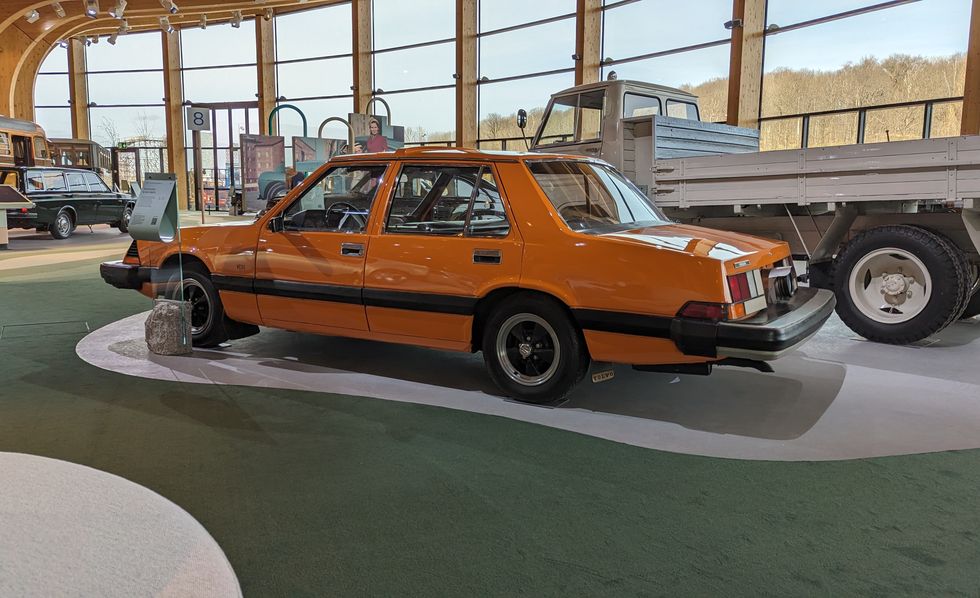
Of course, there is no shortage of Volvo cars, concepts, trucks, and technology featured here. The Volvo Experimental Safety Car (VESC) is impossible to overlook. This concept, which originally debuted at the Geneva auto show in 1972, was a test bed for all types of innovative safety equipment: front and rear airbags, concealed headrests that would deploy during a crash, a steering wheel that would pull away from the driver during a collision, and a 6.5-mm F/1.8 rear-facing camera that would feed video to a CRT screen in the dash.
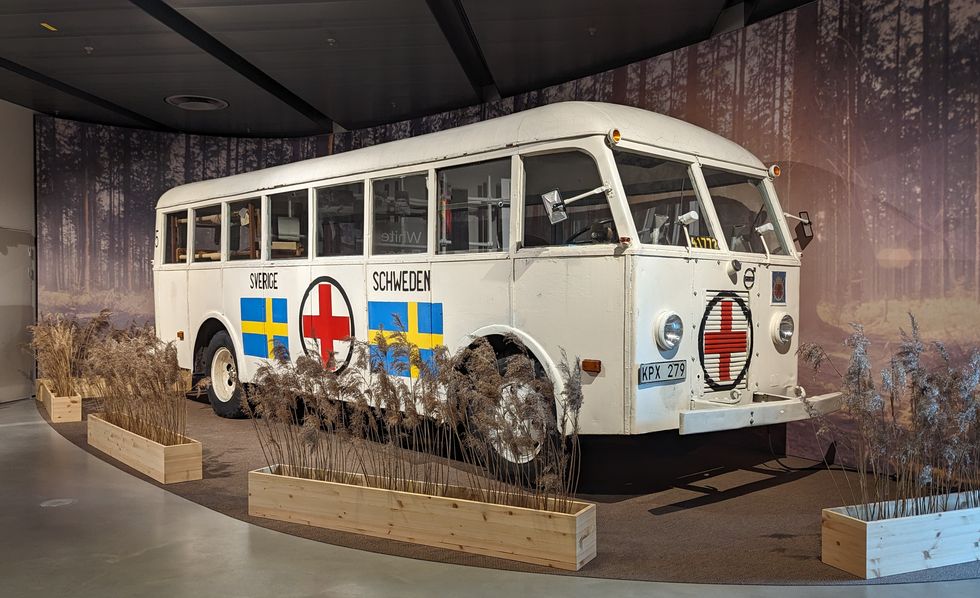
In another room, one of the White Buses sat parked. Painted white, with red crosses on the roof to avoid being bombed by allies during their attempt to ferry more than 15,000 prisoners to Sweden, these buses served a heroic purpose toward the end of World War II. The display is surrounded by literature about the nurses, drivers, and soldiers who carried such a dangerous undertaking.

The Volvo YCC was on display. We asked if we could take it home, but were told no. The YCC (Your Concept Car) originally debuted at the 2004 Geneva auto show and was created by an all-female crew for women. It had a special compartment to store a purse, a headrest designed to comfortably accommodate a ponytail, and washable seats. The team also gave the YCC gullwing doors and the special project would go on to win many awards for its design and effort.
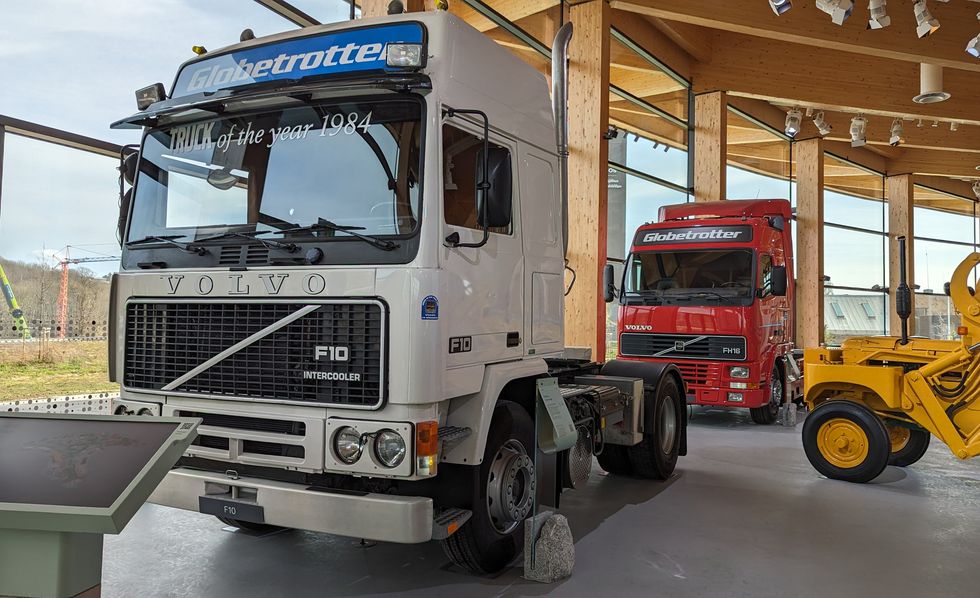
There are other vehicles on display, such as tractors, boats, logging trucks, and semi-trucks. The white F88 from the 1970s wears its significance across the top of its cab. Globetrotter was the top trim level of Volvo trucks, and the moniker is still used today on its trucks specifically designed for long travel. That takes you back to a time when refrigerators, kitchens, and spacious cabs were inspired by companies building trucks in America.
The FH, Volvo's biggest-selling truck ever, is on display behind the F88. It was the first to be built, in 1993. This FH12 was just the start to the Volvo trucks sold today, which are now offered with a range of electric, gasoline, and diesel powertrains. Exhibits big and small enter the space via a massive freight elevator just outside the building that can carry up to 48,500 pounds of Volvo history. Which is more ice wine than we're able to drink in a single visit.
The World of Volvo building will become home to its Overseas Delivery service, making its location relative to the airport and assembly plant so crucial. The site, which is the result of a collaborative effort between Volvo Cars and Volvo Group, is intended to be the home of future product reveals, TED talks, and—we hope— Car and Driver editors, because we so desperately want to play with those excavators again.
Tickets are available at the World of Volvo website or can be purchased at check-in. Choose an annual pass to get a small discount for future events while enjoying unlimited visits throughout the year.
Yes, he's still working on the 1986 Nissan 300ZX Turbo project car he started in high school, and no, it’s not for sale yet. Austin Irwin was born and raised in Michigan, and, despite getting shelled by hockey pucks during a not-so-successful goaltending career through high school and college, still has all of his teeth. He loves cars from the 1980s and Bleu, his Great Pyrenees, and is an active member of the Buffalo Wild Wings community. When Austin isn’t working on his own cars, he’s likely on the side of the highway helping someone else fix theirs.

.css-190qir1:before{background-color:#000000;color:#fff;left:0;width:50%;border:0 solid transparent;bottom:48%;height:0.125rem;content:'';position:absolute;z-index:-10;} News .css-188buow:after{background-color:#000000;color:#fff;right:0;width:50%;border:0 solid transparent;bottom:48%;height:0.125rem;content:'';position:absolute;z-index:-10;}
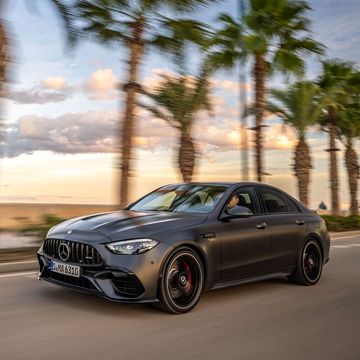
Toyota Prius Recalled: Rear Doors Can Fly Open
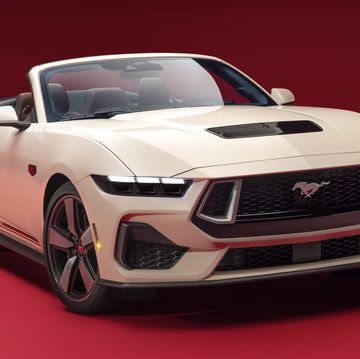
Ford Reveals Mustang 60th Anniversary Edition

Honda Unveils Three New Ye Series EVs for China
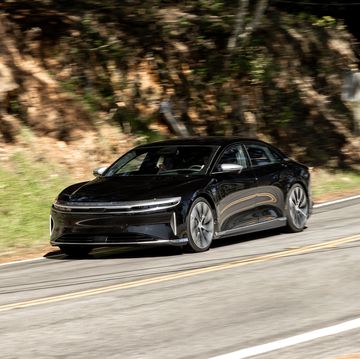
2024 Lucid Air Grand Touring Gets Minor Updates
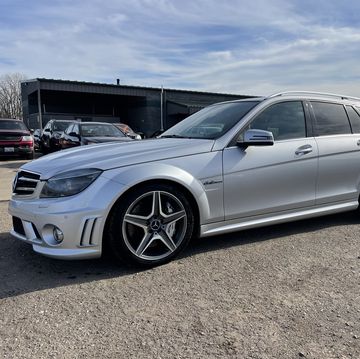
Illegally Imported Mercedes-Benz C63 Wagon Saved
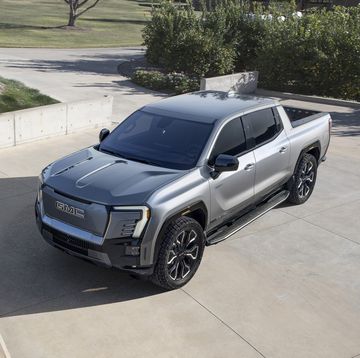
GMC Sierra EV to Arrive with More Range
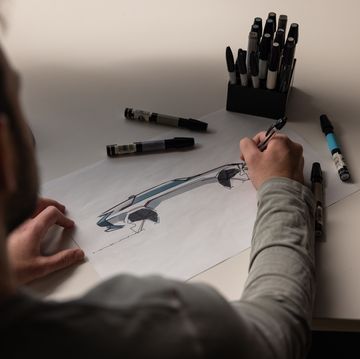
We See How Buick's New Design Identity Was Born
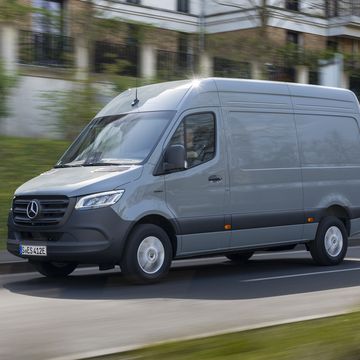
2025 Mercedes-Benz eSprinter: New Smaller Battery

GranCabrio Folgore EV Forecasts Sunny Days Ahead
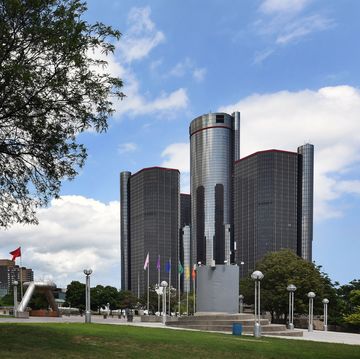
GM Is Moving Out of the RenCen in Detroit, For Now
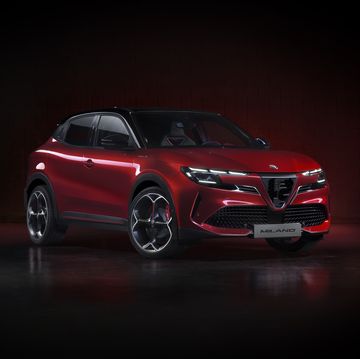
Alfa Romeo Junior SUV Is The Brand's First EV

COMMENTS
Additional equipment and accessories (add-on parts, tyre formats etc.) can change relevant vehicle parameters such as weight, rolling resistance and aerodynamics. These factors, in addition to weather, traffic conditions and driving behaviour, can influence the fuel/electricity consumption, CO₂ emissions, range and performance values of a ...
Public museum tour. We offer one-hour tours at 11 a.m. and 3 p.m. - depending on demand. Together with other visitors, we will give you an insight into the company's history - from ist beginnings to the present day. Registration takes place at the museum ticket counter. The first visitor can choose the guide language, if it is available.
Impressive building and well laid out museum. I was there for at least three hours. Using the audio guide enriches the museum experience. So much to learn about the history of Porsche. For car (performance) enthusiasts, it is really easy to spend a full day at the Porsche museum. Factory tours are booked online but are paid for on-site.
The Porsche Museum offers admission vouchers and vouchers for guided group tours. Multimedia guide. ... This is because the Porsche Museum has a new multimedia guide. The previous purely audio clips have been expanded by 5,000 pictures and 700 films on all exhibits in the permanent exhibition. As a result, Museum visitors can now immerse ...
Enjoy a close-up experience of the history of Porsche. Encounter legendary racing and sports cars, fascinating production models as well as unusual prototypes. More than 80 vehicles will take you from the early years all the way to the present days of Porsche 's history. Visit the Porsche Museum Website.
Published: 30 June 2020. Porsche Museum: design chief Michael Mauer (left) takes Gavin Green on a guided tour. 550 Spyder in the Porsche Museum: 'I'd love to do a pure new sports car, reduced to ...
Exploring the Porsche Museum: A Deep Dive into Automotive History. ... Guided Tours: Opt for a guided tour to gain expert insights into the stories behind the cars and the company's history. These tours can enhance the visitor experience with anecdotes and facts not readily available to the general public;
Full description. Experience an amazing adventure at the Porsche Museum and let yourself get carried away by the great history behind this famous car brand. Choose our private tour with a 5-Stars Guide who cares about your informative trip and enriches your museum adventure. The Porsche Museum attracts many tourists, not only car enthusiasts.
Virtual guided tour through the special exhibition "25 Years of the Boxster" in the Porsche Museum 05/13/2021. To mark the 44th International Museum Day, the Porsche Museum is issuing an invitation to make a digital visit to the museum as from May 16, 2021.
PORSCHE Factory Guided Tour. by mraccine | Sep 22, 2023 | Trips. Friday, September 22nd, 2023: Today, on the program: The PORSCHE Factory tour. We were so lucky. ... In addition, our PCA Group got a special, private Museum tour despite the fact the Museum was already closed for a special event. FYI, the employees get a discount: new cars 20% ...
Porsche Museum Complete Tour with Audio GuideOverview from Wiki: The new Porsche museum stands on a conspicuous junction just outside Porsche Headquarters i...
Virtual guided tour through the special exhibition "25 Years of the Boxster" in the Porsche Museum 13/05/2021. To mark the 44th International Museum Day, the Porsche Museum is issuing an invitation to make a digital visit to the museum as from 16 May 2021.
Email [email protected] 44th International Museum Day on 16 May 2021 Virtual guided tour through the special exhibition "25 Years of the Boxster" in the Porsche Museum Stuttgart. Museums look after treasures and contribute greatly to cultural and social life. The Porsche Museum does not just present historical communication looking
The Porsche museum is more like a cathedral to Porsche. The better museum is Mercedes. It is one of the best museums we've ever visited. But let's face it, no one goes to Porsche for the museum experience. ... In the Porsche Museum a guided tour can make the visit more interesting. Posted by Philip. London, United Kingdom. 03/14/18 01:34 PM.
Current Press releases Virtual guided tour through the special exhibition "25 Years of the Boxster" in the Porsche Museum 44th International Museum Day on 16 May 2021 . Stuttg
Further information and booking: Porsche barrier-free museum - Porsche Germany . Guided tours for the hearing impaired. Book an individual tour for people with hearing impairments. Learn a lot of details about the history of Porsche with a sign language interpreter organized by you and our guide. Get to know the history of racing vehicles ...
A 90-minute guided tour through One Porsche Drive, covering facts about the brand, the story of Porsche in the US and everything about the Porsche Experience Center itself. ... 2024 Driving Tours. Porsche Travel Experience USA 2024 Driving Tours. Porsche Travel Experience; Lake Tahoe; Northeast Fall Foliage; Southeast; Lake Tahoe. Northeast ...
The history of Porsche and the exhibits in the Porsche Museum are explained in very easy terms to children aged between 8 and 13 years. They can discover the fascination of Porsche in a playful way. This guided tour can be booked for groups of up to 10 children plus two accompanying adults. The charge for the around 60-minute personal guided ...
The Moscow Metro Tour is included in most guided tours' itineraries. Opened in 1935, under Stalin's regime, the metro was not only meant to solve transport problems, but also was hailed as "a people's palace". Every station you will see during your Moscow metro tour looks like a palace room. There are bright paintings, mosaics ...
Private and Luxury in Moscow: Check out 17 reviews and photos of Viator's Private Guided Moscow Underground Palaces Metro Tour
Moscow Metro private tours. 2-hour tour $87: 10 Must-See Moscow Metro stations with hotel pick-up and drop-off. 3-hour tour $137: 20 Must-See Moscow Metro stations with Russian lunch in beautifully-decorated Metro Diner + hotel pick-up and drop off. Metro pass is included in the price of both tours.
Porsche Classic; Porsche Museum; Porsche Company. Investor Relations; At a Glance; Jobs & Careers; FAQ; Christophorus - The Porsche Magazine; Share Page. Facebook Twitter Digg LinkedIn Pinterest; Connect with Porsche. HOME. ... * All new vehicles offered by Porsche are type-approved according to WLTP. Official NEDC values derived from WLTP ...
Have a look (7)Elektroskaya Station before backtracking into the center of Moscow, stopping off at (8)Baumskaya, getting off the Dark Blue/#3 line at (9)Ploschad Revolyutsii. Change to the Dark Green/#2 line and go south one stop to see (10)Novokuznetskaya Station. Check out our new Moscow Indie Travel Guide, book a flight to Moscow and read 10 ...
BMW Welt, a stone toss away from the company's HQ in Munich Germany, has Double Cones. The Porsche Museum in Zuffenhausen has a 911 kebab—or, as they call it, "Porscheplatz"—out front. And now ...